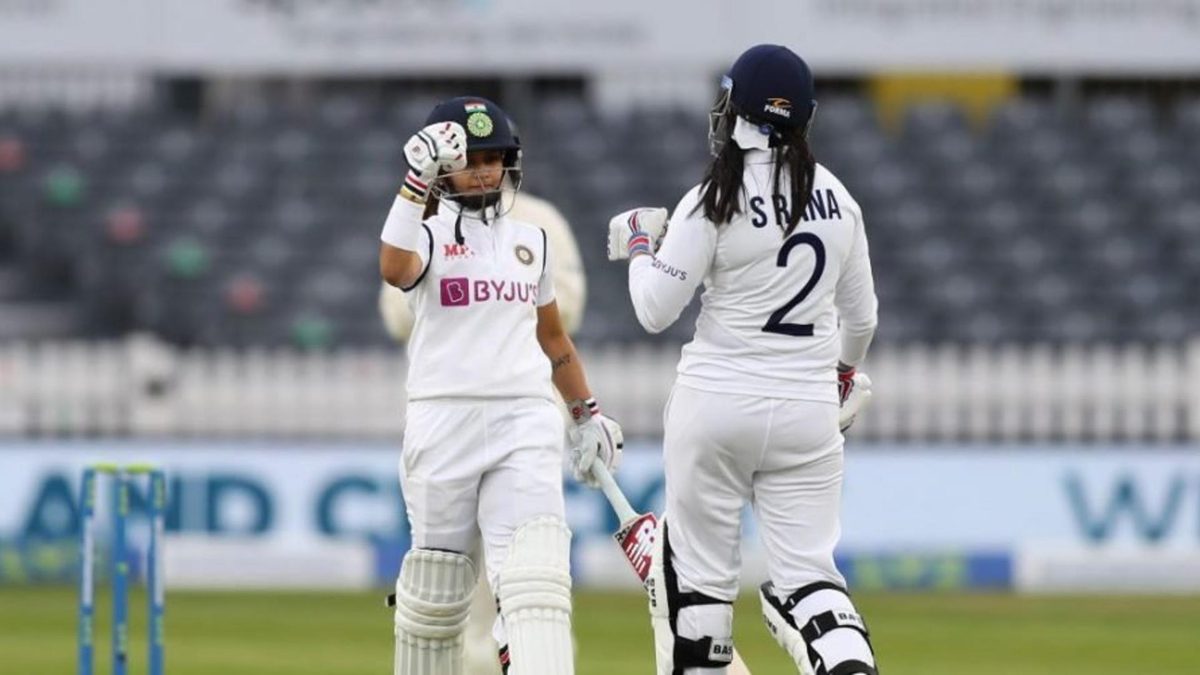
After yet another enthralling women’s Test came to a familiar shaking of hands at the end of the fourth day, Rohit Sankar argues for a fifth day to force results, and thereby generate more interest.
Subscribe to the Wisden Cricket YouTube channel for post-match awards, player interviews, analysis and much more.
Even as the WTC final threatened to turn into a damp squib, in the same country, India women and England women played out a red-ball game that could easily have been a great advertisement for women’s Test cricket.
Instead, it left spectators hanging dry and high as an engrossing battle between India’s tail and England’s quicks ended as the light faded on day four and a result became impossible.
“What a brilliant game of cricket,” Heather Knight, the England captain, said at the end of the Test. It was. It indeed was. Yet, the lingering feeling was that the game could easily have forced a result with an extra day.
“It was unfortunate it didn’t have the dramatic and exciting finish that it could have done but what a game of cricket,” Knight said.
“I think it’s almost a shame that today it fizzled out a little bit. It was set up to be very good and very exciting, but I think it’s been a brilliant advert.”
For those left in the cold, the playing conditions in women’s Tests are slightly different from those in the men’s game. For one, there are only four days of action. Secondly, more overs (100 compared to 90 in a day in men’s) are bowled in a day in women’s Tests, ensuring that the men’s game only has 50 overs more across a Test match.
Why then is an extra day important, especially when there’s an argument for more Test matches in the first place in the women’s game? Since 2000, there have only been 31 women’s Tests and nearly half of them (15) were drawn. In contrast, in the men’s game, only 21.7% Tests were drawn in this century. Overall, only 51 of the 141 women’s Test matches have had results. 90 of them ended in a draw (63.8%). That’s about 31% in the men’s game overall.
At a time there’s a strong argument for four-day Test matches in the men’s game, increasing a day in the women’s, especially when there aren’t too many matches played, might seem odd.
However, it’s in whites, more than coloured clothing, that the chasm between the men’s and women’s game is widest. Across sports, when there’s more emphasis on physical strength, the men have performed at a higher relative level than women. It’s why the average ball speeds are quite a bit high in the men’s game than the women’s. It’s why in baseball, pitches are faster by men than women. The same applies to tennis where the average serve speed is higher.
The boundaries are shorter and the ball is lighter in the women’s game for this reason. There haven’t been as much progress in bowling, in terms of skill, compared to batting in general in the women’s game. While bowling, and especially fast bowling, has obvious limitations in terms of delivering at higher speeds, the main physical shortcomings in the batting department are clearing boundaries and running quicker between wickets. The need for the former is absent in the red ball game and is also helped by smaller boundaries.
As such women batters in Tests are capable of upping their skill levels above bowlers without using up more of their stamina. It makes taking 20 wickets a lot more harder than in the men’s game.
To increase interest in women’s Test, spectators will need more results, and at the moment, the game does not throw up enough of those. Knight touched upon having an extra day at the end of the Bristol Test, when she stated she “would definitely be open to it”.
It wasn’t the first time the five-day Test argument was raised. At the end of the women’s Ashes in 2019, a similar argument popped up after Australia decided to bat on to retain the Ashes after rain intervened to make a result tougher. At the time, Matthew Mott, the Australia women’s team coach argued that they did ponder making a match out of it, but didn’t want to give England a chance at victory.
“Maybe it’s an advertisement for five-day Test in women’s cricket,” Mott said then. “With four days and you take half a day out, it certainly wasn’t enough. It would have been awesome if we’d had the extra day.”
Even as the women’s game starts to make rapid strides, there’s little being done to capture and sustain the interest of viewers. The focus on T20 cricket is understandable, but unless and until Test matches are viewed as marketable, there’s little purpose in organizing these four-day events that end in dampeners.







